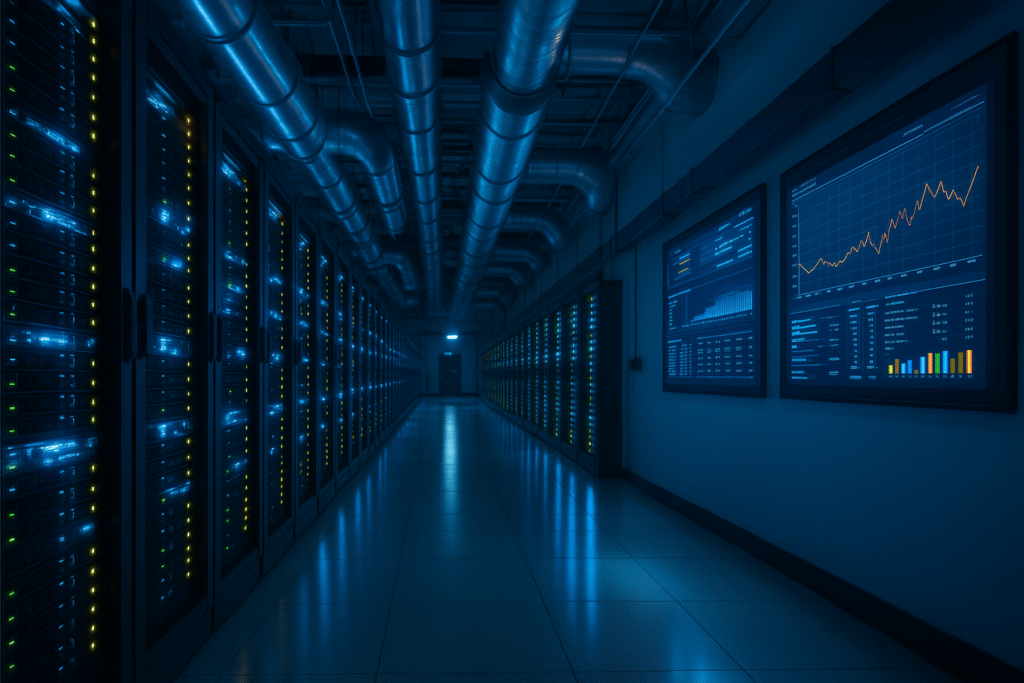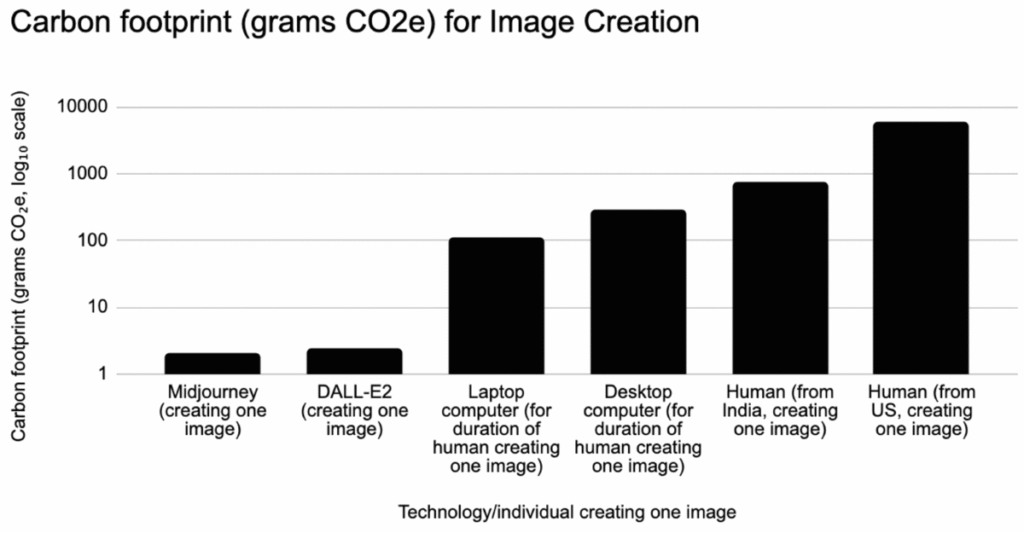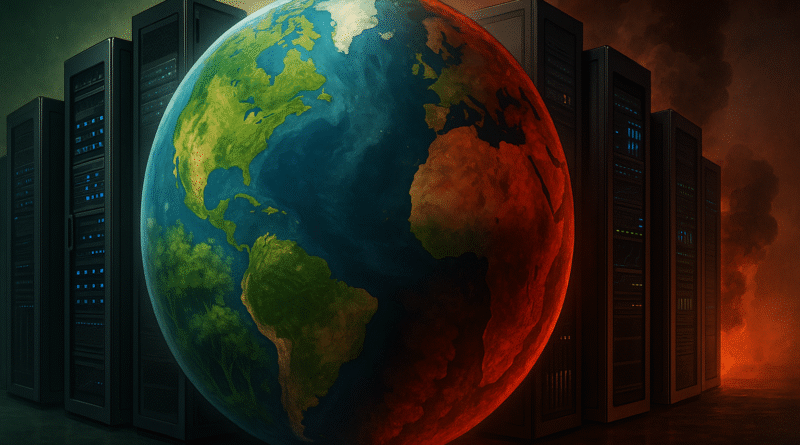The Environmental Impact of AI: Can It Be Sustainable?
Environmental Impact of AI Introduction
AI is revolutionizing the world,from writing your emails to helping doctors detect cancer. But while we’re busy being amazed by what artificial intelligence can do, we need to ask a bigger question: what is it costing us?
And no, we’re not just talking dollars or data privacy. We’re talking planet Earth.
AI, as sleek and digital as it feels, has a very real carbon footprint. Behind every chatbot, recommendation engine, or smart assistant is a network of data centers sucking up electricity, cooling systems humming 24/7, and training processes that sometimes consume as much energy as an entire town.
So, in this age of climate anxiety and environmental accountability, it’s time to ask:
Can AI be sustainable? Or are we building something brilliant that’s quietly burning through the planet’s resources?
Table of Contents
Why This Matters Now
AI is growing fast. According to industry reports:
- Global AI energy usage is expected to double every 3 years.
- Training a single large language model (like GPT-3) can emit over 550 tons of CO₂,equivalent to five roundtrip flights from New York to London per person… for 100 people.
- Data centers already account for 1–1.5% of global electricity use.
And that’s before considering the rise of:
- Edge computing
- AI-powered crypto systems
- Generative AI (which processes trillions of parameters)
It’s not about stopping AI,it’s about making it smarter in every sense, including ecologically.
1. Why AI Uses So Much Energy
AI might be invisible, but it’s resource-hungry. The biggest energy guzzlers are:
a) Model Training
Large-scale AI models require massive computational power to be trained, often across multiple GPUs over days or weeks. This process involves:
- Billions of calculations per second
- Repetitive data passes
- Continuous optimization
b) Data Centers
Once trained, models live in data centers. These buildings house:
- Thousands of servers
- Cooling systems to keep them from melting
- Redundant backups and 24/7 power
Many are powered by fossil fuels, especially in countries with coal-based grids.
c) Inference at Scale
Every time you use AI (e.g., autocomplete, voice assistant, content generation), it runs in real time, a process called inference. Multiply that by billions of users, and you’ve got constant, global electricity demand.
2. The Hidden Carbon Cost of Convenience
AI is often sold as “clean tech” because it’s paperless and cloud-based. But the reality is more nuanced.
Examples of carbon-heavy AI use cases:
- Training image recognition models for self-driving cars
- Deepfake and generative media creation
- Personalized ad delivery systems
- Large-scale surveillance infrastructure
Even “fun” AI,like art generators or AI photo editors,carry a footprint.
Here’s the kicker:
Most of the carbon emissions aren’t felt immediately. They’re embedded upstream,in energy grids, server production, and cooling systems, which makes the impact easier to ignore.

3. Can AI Help Solve Environmental Problems Too?
Ironically, yes. AI might also be one of the best tools we have to fight climate change.
a) Energy Optimization
AI systems can:
- Predict power grid loads
- Reduce energy waste in buildings
- Optimize battery usage and charging for EVs
- Help smart thermostats learn your habits
Companies like Google have used DeepMind’s AI to cut data center cooling energy by up to 40%.
b) Environmental Monitoring
AI can:
- Analyze satellite imagery to detect deforestation
- Track illegal fishing
- Predict wildfires or flood risks
- Optimize irrigation in agriculture
- Even sectors like education are seeing smarter energy use through AI-driven systems
These applications reduce manual labor, enhance early warning systems, and increase efficiency in environmental interventions.
c) Sustainable Manufacturing
AI helps reduce overproduction, waste, and carbon footprints by:
- Predicting product demand more accurately
- Optimizing logistics and transportation
AI helps optimize logistics and reduce emissions in industries like supply chains. - Managing supply chains responsibly
So yes,when designed with care, AI can be an eco-warrior.
4. The Push for Green AI
Enter a new movement: Green AI.
This philosophy promotes building AI systems that are:
- Efficient in training and inference
- Transparent about energy usage
- Responsible in deployment
Green AI means:
- Prioritizing energy cost per improvement (not just accuracy)
- Publishing environmental impact alongside model performance
- Creating smaller, faster models for everyday use
Even academic papers now come with “carbon impact” footnotes, and AI leaders like Hugging Face and OpenAI are working to track energy use more precisely.

5. The Rise of Sustainable Infrastructure
Beyond the AI code itself, companies are focusing on greener infrastructure:
a) Renewable-Powered Data Centers
- Microsoft aims to be carbon-negative by 2030
- Google already offsets 100% of its energy usage with renewables
- Amazon is investing in solar and wind farms to power AWS
b) Efficient Chips and Hardware
AI chipmakers (like Nvidia, Intel, and Apple) are designing hardware that:
- Runs models faster
- Uses less electricity
- Produces less heat
c) Model Compression & Distillation
Researchers are now shrinking large AI models without losing performance using:
- Model distillation
- Quantization
- Pruning
This makes AI lighter, faster, and greener.
6. What Users & Developers Can Do
Sustainability isn’t just for corporations,we all play a role.
For Developers:
- Use smaller models when possible
- Optimize code and reduce redundant training
- Choose green cloud providers
- Use tools like CodeCarbon or ML CO2 Impact Tracker
For Everyday Users:
- Don’t “abuse” generative tools for fun if you don’t need to
- Prefer AI services from eco-conscious platforms
- Support legislation around responsible AI
Like with water and plastic, conscious use adds up.
7. Balancing Innovation with Responsibility
We’re not here to rain on AI’s parade. Innovation is exciting and necessary. But uncontrolled growth, unchecked by environmental awareness, can be damaging.
The goal is to find a balance:
- Between performance and efficiency
- Between hype and humility
- Between scaling up and slowing down (strategically)
Because in the end, no innovation is worth it if it scorches the Earth it’s built on.
Even leading labs like OpenAI are working on responsible development.
FAQ
Q1: Is AI really that bad for the environment?
A1: It depends. Not all AI is energy-hungry, but large-scale models and cloud-heavy systems can have significant carbon footprints. Awareness is the first step toward responsible use.
Q2: Can AI become 100% sustainable?
A2: Likely not completely, but it can become dramatically more sustainable through green energy, optimized models, and mindful deployment.
Q3: What about blockchain and AI together,is that worse?
A3: Potentially yes. Combining two resource-intensive systems (e.g., AI + crypto mining) magnifies environmental impact unless carefully optimized.
Final Thoughts & CTA
AI isn’t inherently unsustainable,but how we build and use it determines its environmental cost.
As users, developers, and innovators, we need to:
- Design for efficiency
- Demand transparency
- Support eco-conscious AI practices
Because the goal isn’t just smart tech. It’s smart stewardship.
If we’re going to let machines think for us, we better make sure they’re also thinking with us, for a future that’s intelligent and inhabitable.
Want to stay updated on AI’s impact beyond the hype?
Follow us at aihunterguides.com, where we break down the tech and tackle the tough questions, one sustainable step at a time.

Pingback: AI Data Center Environmental Costs: 6 Powerful Facts